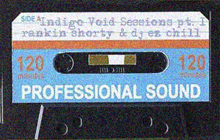Ernst Chladni and his amazing plates
Ernst Chladni (1756 – 1827) was a German physicist and musician who discovered a nice and simple way to visualize sound vibrations in plates. In the video you see the original experiment he came up with. It's called a Chladni plate.
In Chladni's words "the sand is thrown aside by the trembling of the vibrating parts and accumulated on the nodal lines". Chladni must have liked what he saw because he drew hundreds of different patterns for his books. His work also helped instrument builders to research the violins made by the craftsmen of Cremona. Bauble factor 20%
Holographic interferograms and TV holography
The invention of the laser beam allowed scientists like Thomas D. Rossing to refine Chladni's methods. Using the techniques of time-average holographic interferometry and TV holography you can visualize vibrations in musical instruments with extreme precision.

Mr. Rossing has detected as many as 100 different modes of vibration in a cymbal. That's 100 different ways to wobble and a lot of them simultaneously. If you see those pictures it's easy to understand why electronic cymbal sounds produced by vintage drum machines sound thin and unrealistic. You just can't do that with a synthesizer. Read more about cymbal vibrations and cymbal synthesis here. Bauble factor 10%
The Cymatic vision of prof. Hans Jenny
The Swiss medical doctor and natural scientist prof. Hans Jenny (1904-1972) is the undisputed king of psychedelic wave pattern porn. He called it 'Cymatics' himself. Jenny took Chladni plates and related techniques to an artistic level in his books and videos. He's also a musically inspired philosopher. His motto is "in the beginning there was sound". Bauble factor 50%
Dr. Masaru Emoto's happy snowflakes
 The Japanese Dr. Masaru Emoto is the Father Christmas of wave pattern research. He got quite a reputation in New Age circles when he claimed that he could crystallize the effects of music on water. He also produced pictures of happy snowflakes, sad snowflakes, harmonic and even chaotic snowflakes. His conclusion was more or less that snowflakes prefer classical music.
The Japanese Dr. Masaru Emoto is the Father Christmas of wave pattern research. He got quite a reputation in New Age circles when he claimed that he could crystallize the effects of music on water. He also produced pictures of happy snowflakes, sad snowflakes, harmonic and even chaotic snowflakes. His conclusion was more or less that snowflakes prefer classical music.Dr. Emoto tried to pose as a real scientist for a while but his methods turned out to be as scientific as Christmas trees. He seems quite comfortable now in his role as New Age guru. Guys like Emoto are also the reason why Plato's doormen would "let no one ignorant of geometry enter". If you're addicted to baubles he's your man. Bauble factor 95%
DIY wave pattern science
There's also a lot of this stuff on Youtube. Try keywords like 'cornstarch' or 'rubin's tube'.
Levitation - Bauble factor 70%
Rubin's Tube - Bauble factor 80%
Cornstarch - Bauble factor 90%
Candle - this one gets the ultra lo tech award plus bonus points for the best music. Bauble factor 20%
















